urban remains methodically extracts park view church's "munich" style tryptych windows executed by drehobl brothers
This entry was posted on October 26 2016 by Eric
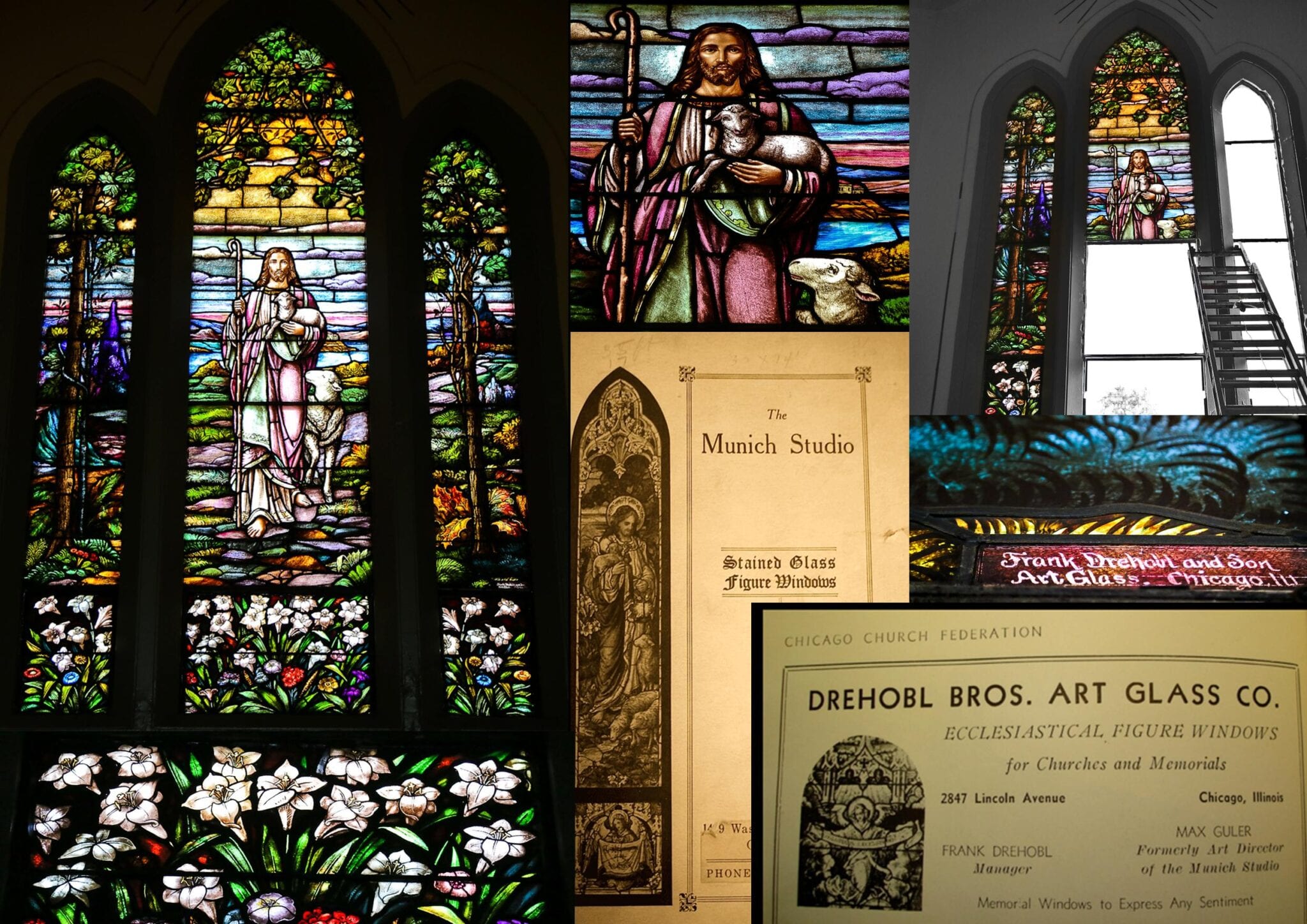
for the past two weeks i've devoted nearly every afternoon methodically and painstakingly extracting any and all art glass windows from the soon-to-be-demolished gothic style park view lutheran church featuring an indiana blue limestone facade and single bell tower topped by a an unusual oversized neon light cross. completed in 1929, the church's interior is outfitted with brilliantly colored art glass windows fabricated by three individual studios (i.e., drehobl brothers, f.x. zettler, and h. munch studio, chicago, ills.
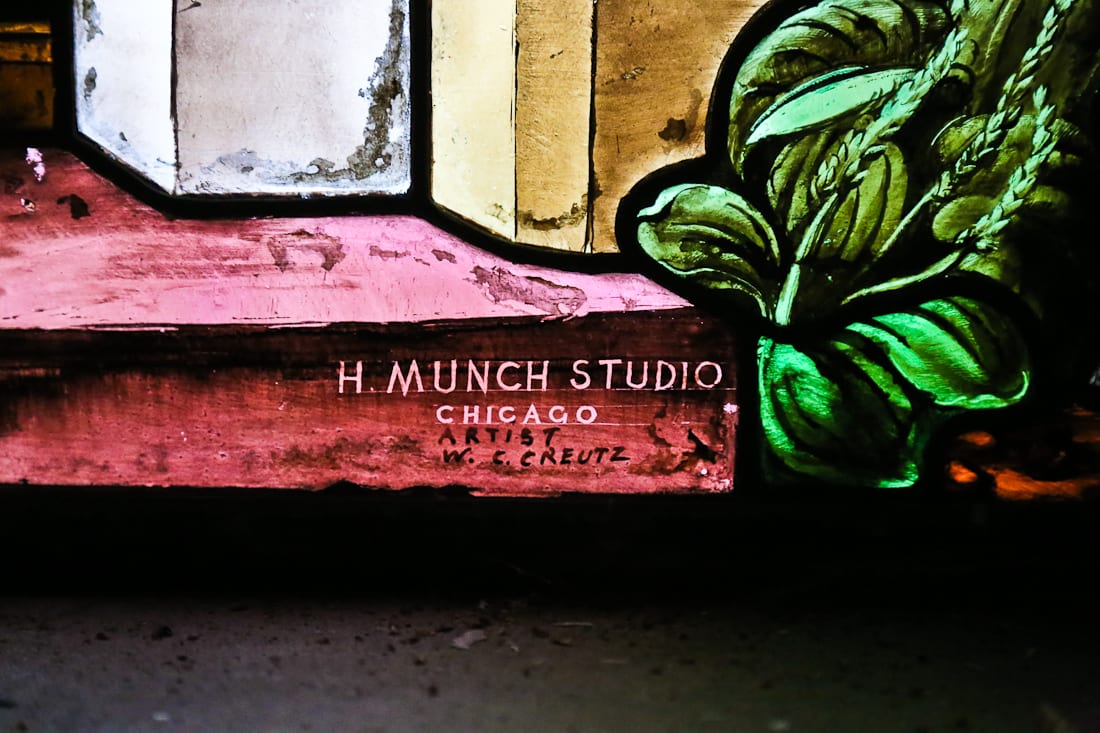
the majority of the figurative and/or narrative windows salvaged from park view lutheran church contain panels designed to compose a story (ie., narratives of the bible) surrounded by lavish floral motifs in and around and the bordering glass. the "cartoons" were drawn for every "light" or opening in the window. a typical configuration consists of multiple lights with tiers and tracery lights above. each piece of glass is selected for the desired color and cut with exact fits ensured by grozing the edges of the glass with tools that can break off small pieces. the exact position of the lead is also considered as part of the calculated visual effect.
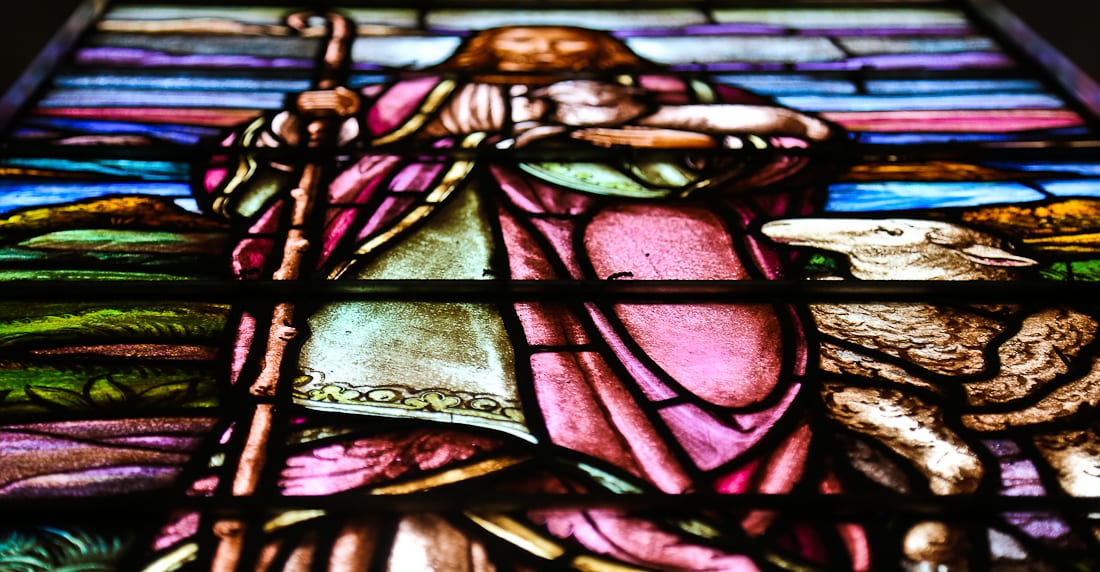
the details of the figure faces, hair, hands and feet, etc., is painted onto the inner surface of the glass using a special glass paint which contains finely ground lead or copper filings, ground glass, gum arabic and a medium such as wine, vinegar or (traditionally) urine. the art of painting details became increasingly elaborate and reached its height in the early 20th century.
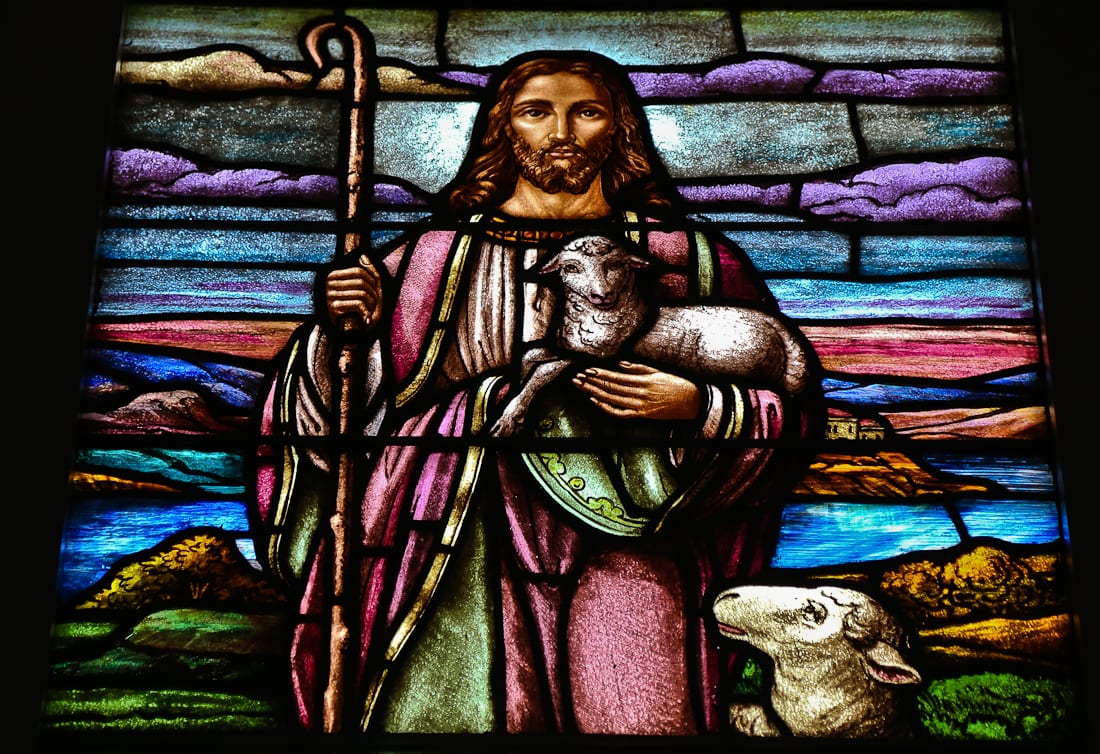
from early on, artists used a "silver stain," which is composed largely of silver nitrate. the stain provided a yellow effect ranging from pale lemon to deep orange ans was usually painted onto the outside of a piece of glass, then fired to make it permanent. the yellow was particularly useful for enhancing borders, canopies and haloes, and turning blue glass into green glass. a stain known as "cousin's rose" was developed to enhance flesh tones.
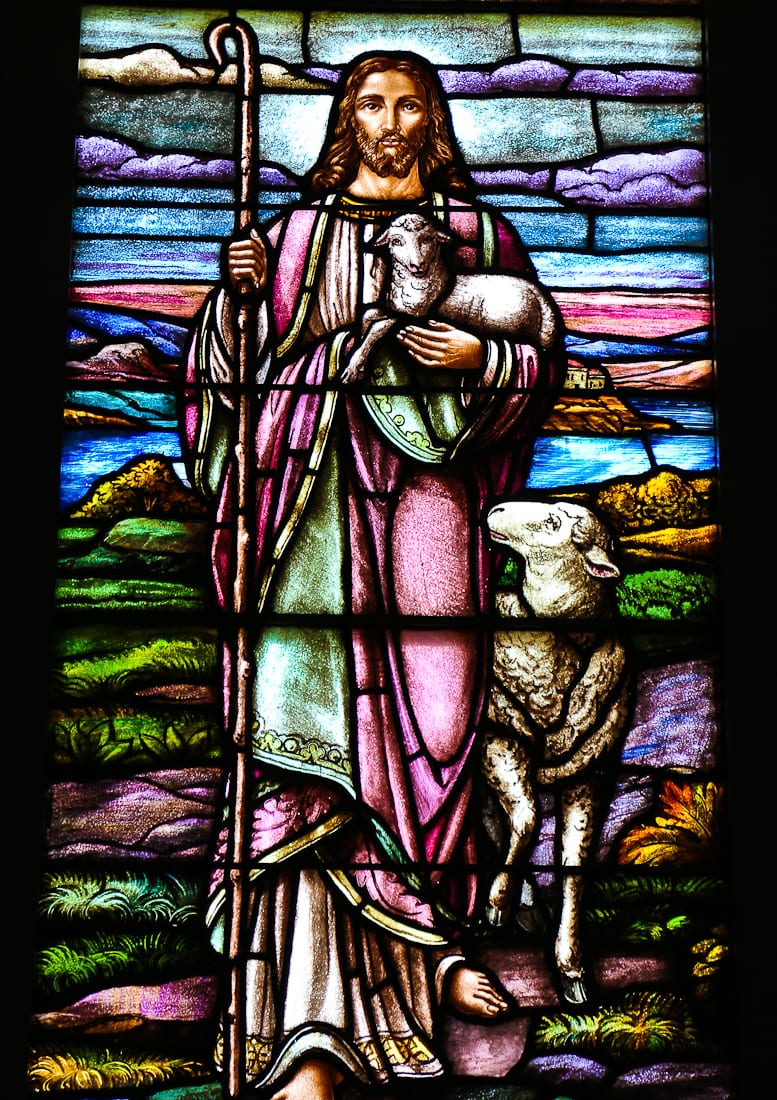
additional glass stains were introduced over time, with most of them colored by ground glass particles. they were a form of enamel. painting on glass with these stains was initially used for small heraldic designs and other details, but by the 17th century a style of stained glass had evolved that was no longer dependent upon the skillful cutting of colored glass into sections. scenes were painted onto glass panels of square, tile-like formats. the colors were then annealed to the glass before the pieces were assembled.
once the glass was cut and painted, the pieces were assembled by slotting them into h-sectioned lead cames. all the joints were then soldered together and treated with a soft oily cement or mastic to prevent the glass from rattling and make the window weatherproof.
when the windows were inserted into their slotted window spaces, iron rods were placed across at various points to support the weight of each section. the window panels were then tied to these rods with copper wire. all of the painted church windows removed, were divided into sections by heavy metal frames called "ferramenta."
the three "munich" style windows furnished by the drehobl brothers are heavily painted with dark and richly colored iron oxides to achieve a visually stunning variegated color scheme making the assemblages some of the most impressive i've seen in years.
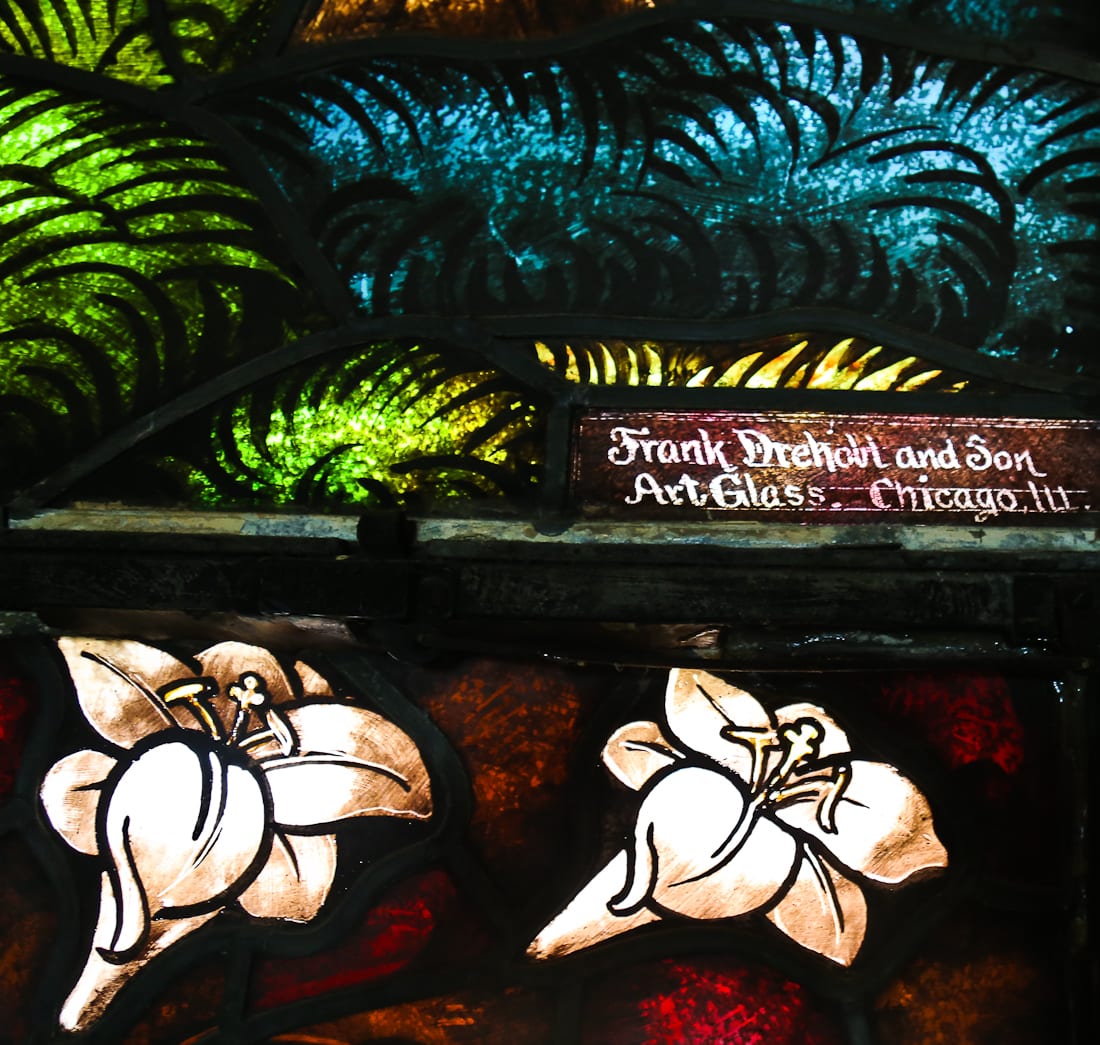
drehobl bothers art glass company dates back to 1919 when founders frank drehobl sr. (formerly employed with the flanagan and biedenweg company) and his brother joseph received their first commission making stained glass windows for seeburg player pianos. around the same time, drehobl brothers became one of the few art glass companies that fabricated the geometric style leaded art glass windows for the hugely popular chicago bungalows that were being erected in and around chicago during the 1920's and 1930's.
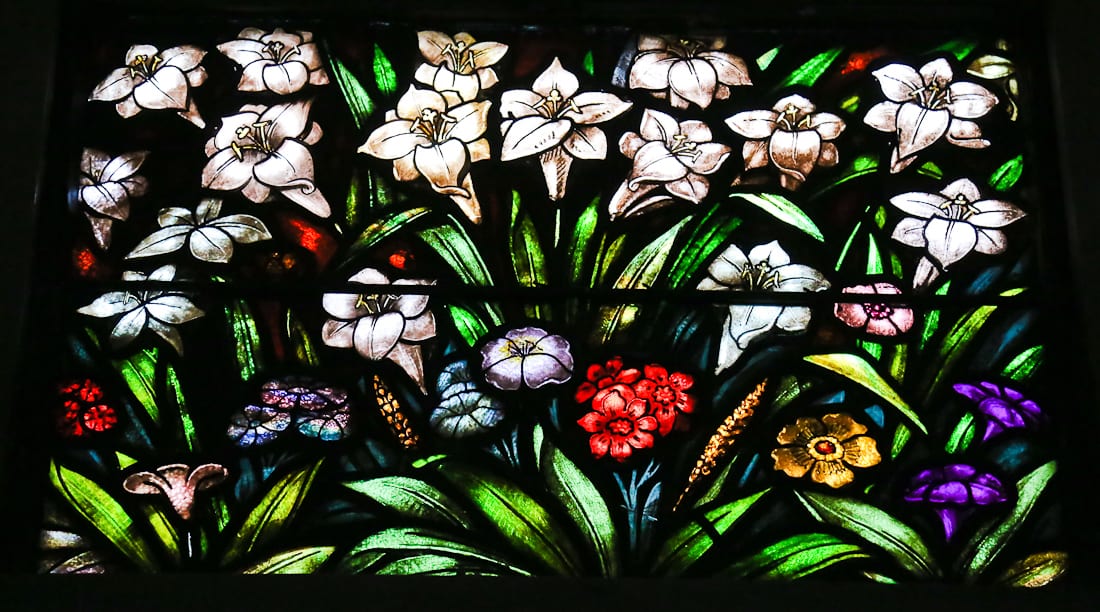
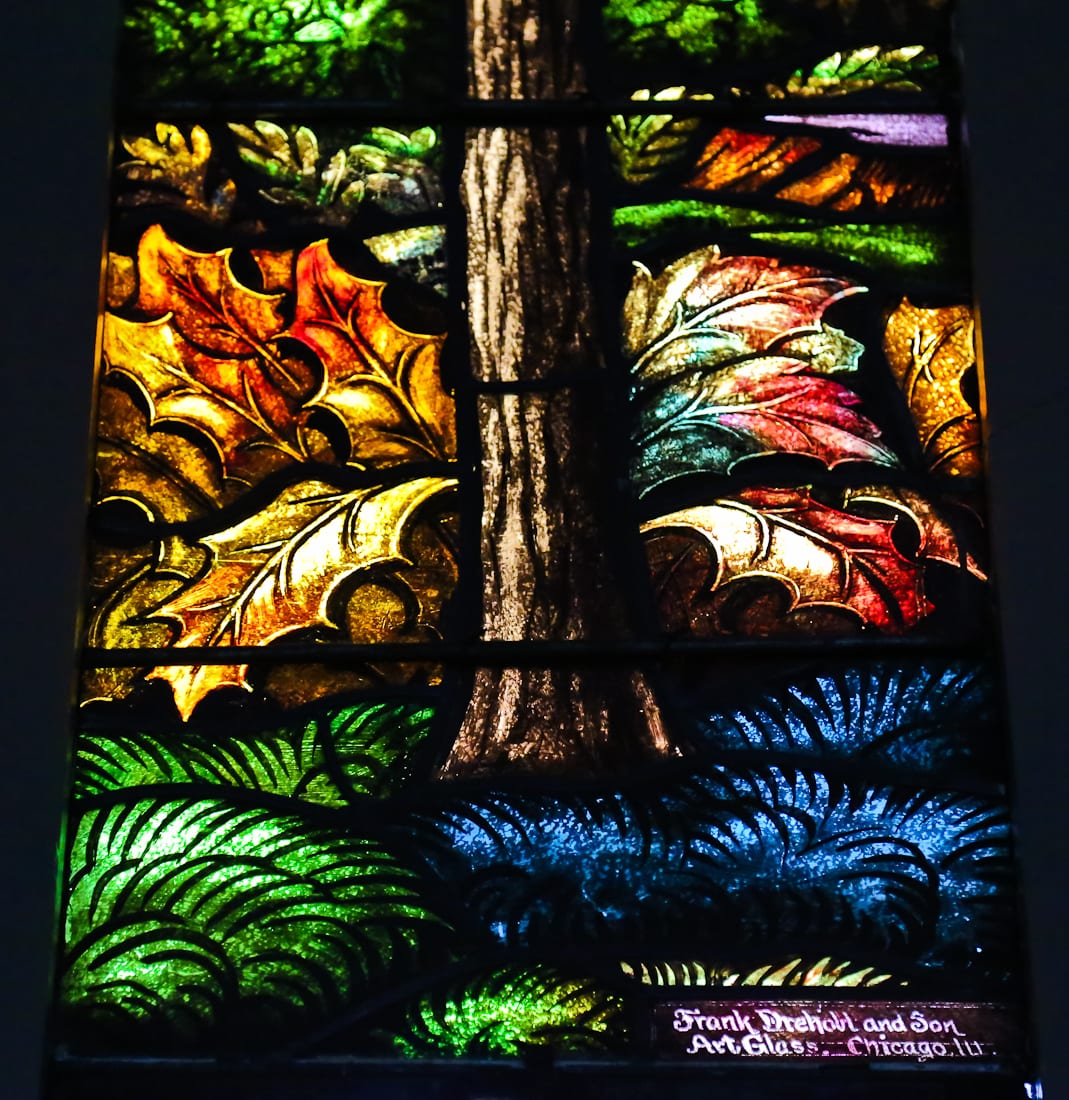
during the 1930's, drehobl brothers witnessed a rebirth when it recruited several glass artists, designers and painters (e.g., joseph lazar, max guler, geroge wieoeder) from munich studio shortly after it closed its doors (a victim of the great depression). with the newly appointed and highly skilled artisans now onboard, drehobl began taking on several commissions for church building windows that were mostly crafted in the "munich" style (i.e., hand-painted and fired onto large panels of glass).
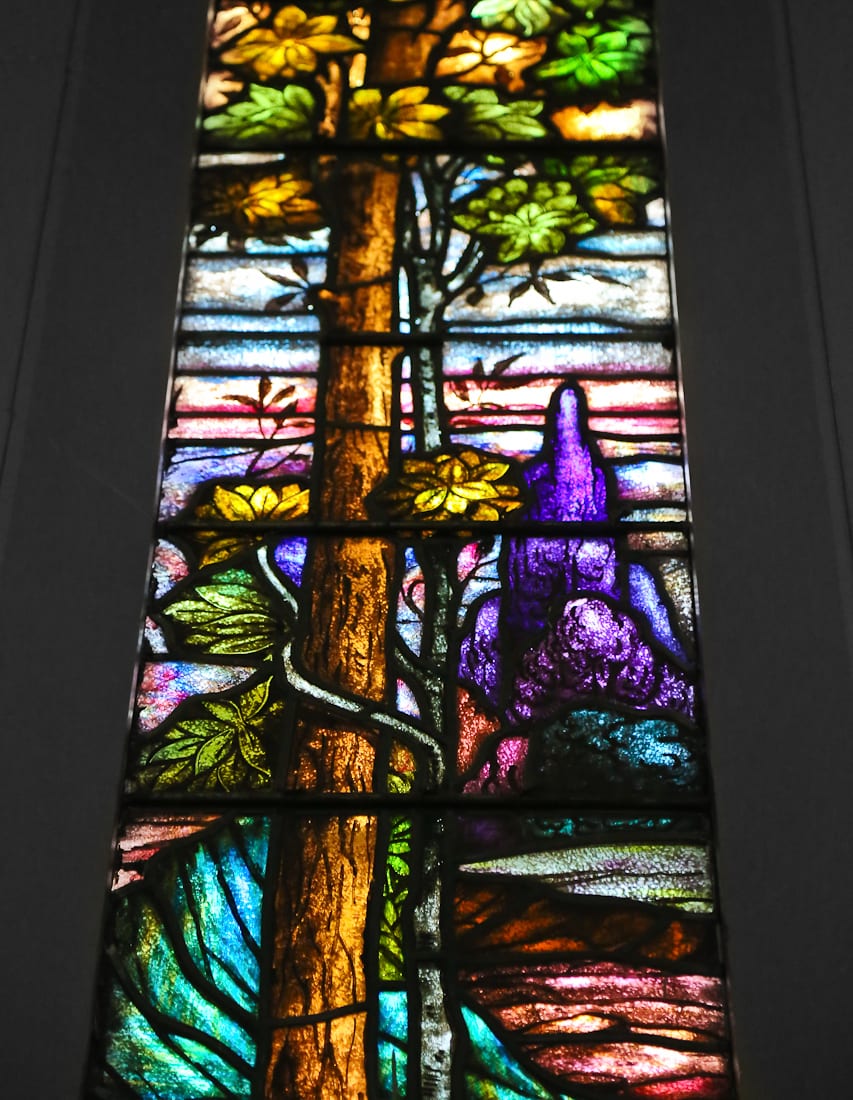
the drehobl art glass company is the oldest stained glass company still in operation to this day. from bungalows to churches, the drehobl brothers played in important role in the production and installation of art glass windows throughout chicago during the first half of the 20th century.
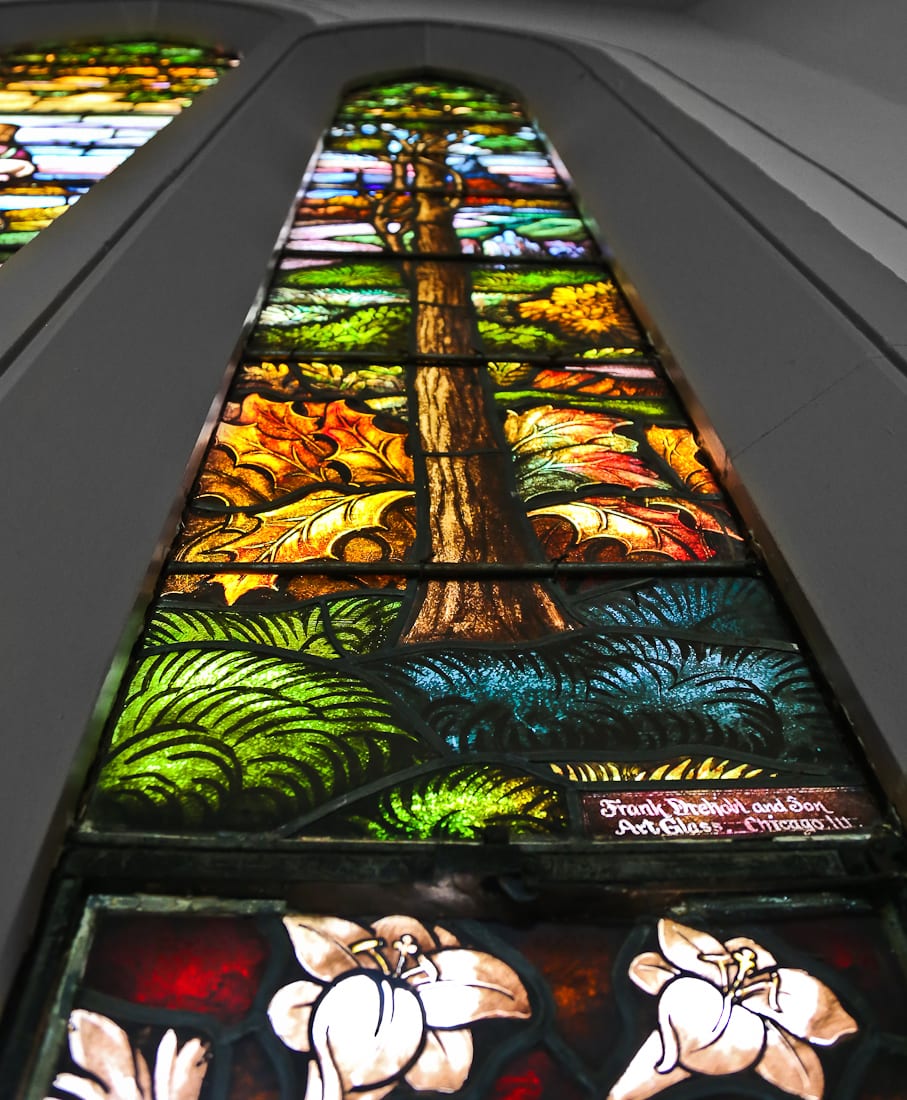
the additional images below provide a glimpse at the windows in situ - before, during and after their removal, along with a few images of the church that commissioned the drehobl brothers to execute and install the remarkable triptych that is currently being thoroughly documented in the studio.
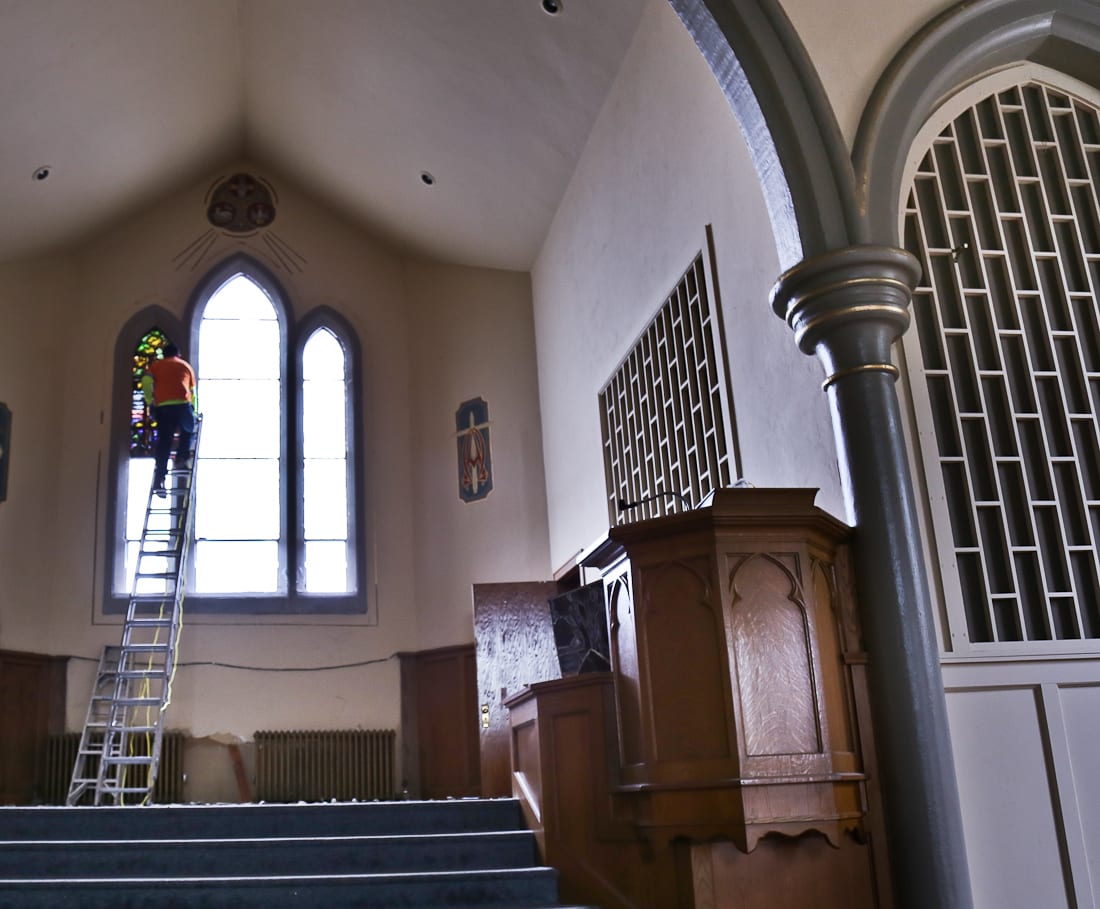
the drehobl brothers triptych church window consisted of 8 individual panels reinforced and or supported by iron rods anchored into the stone window frame edges.
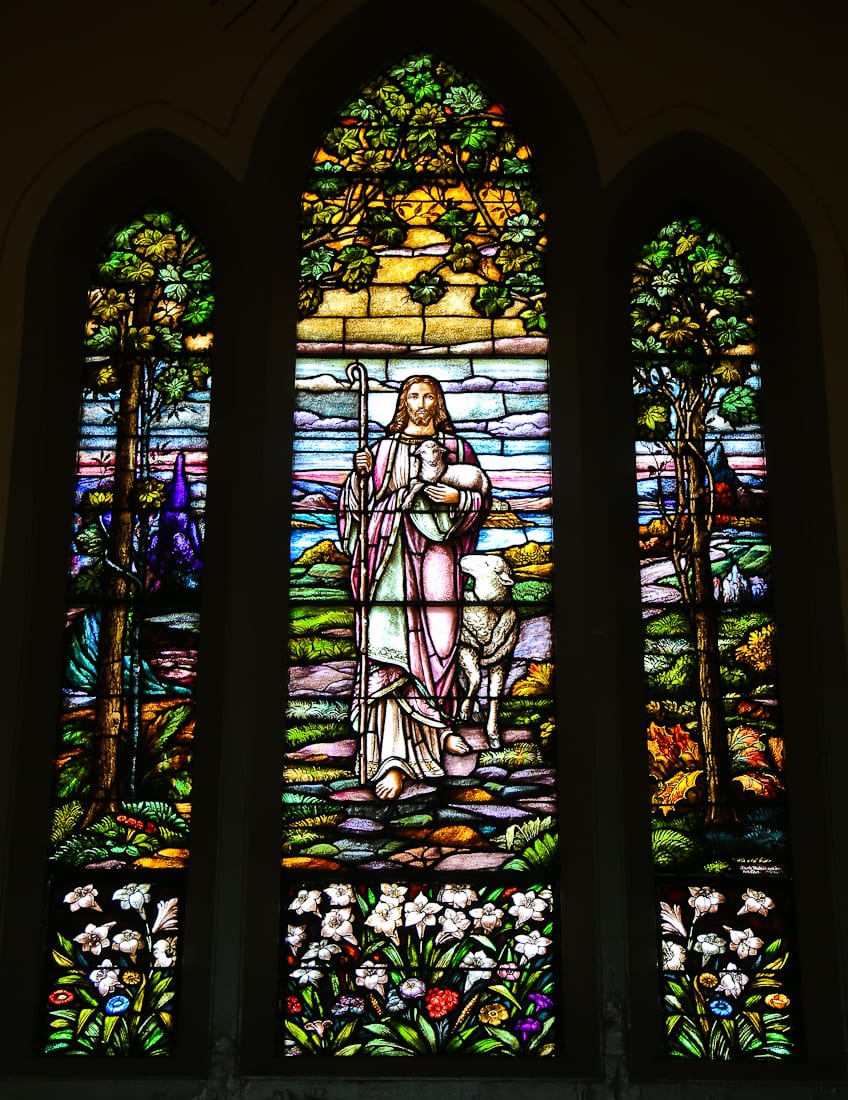
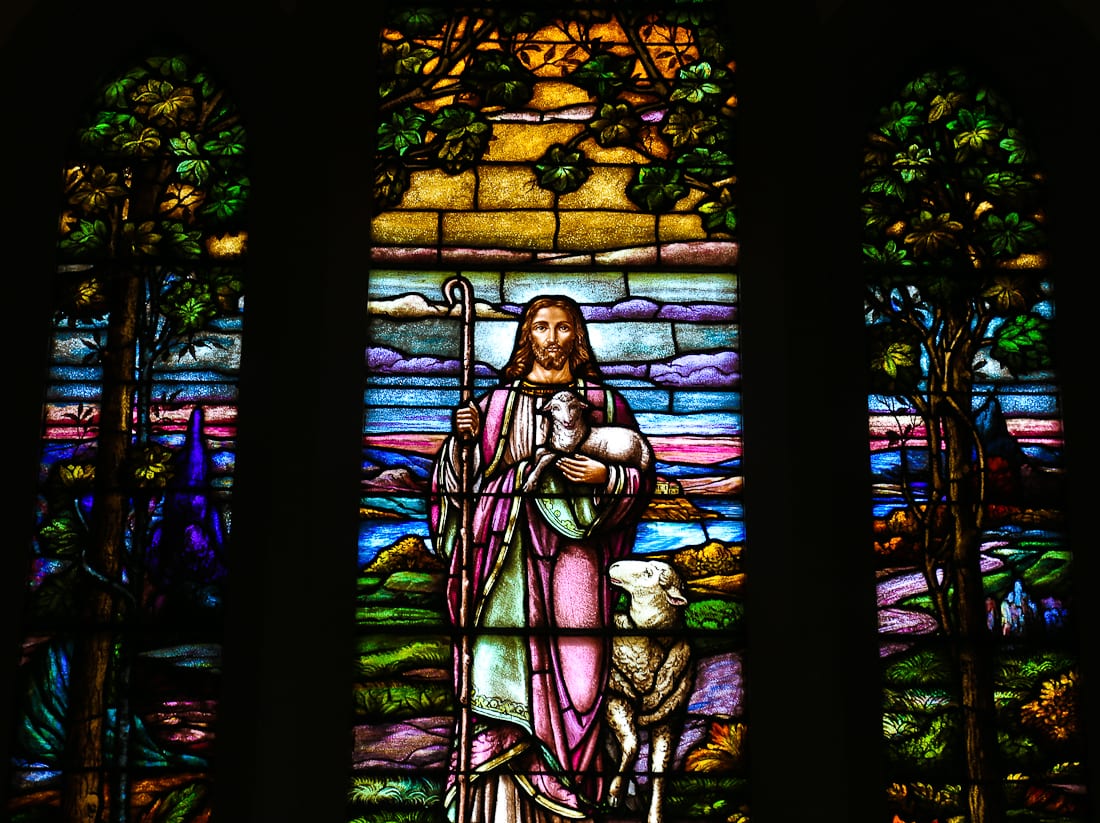
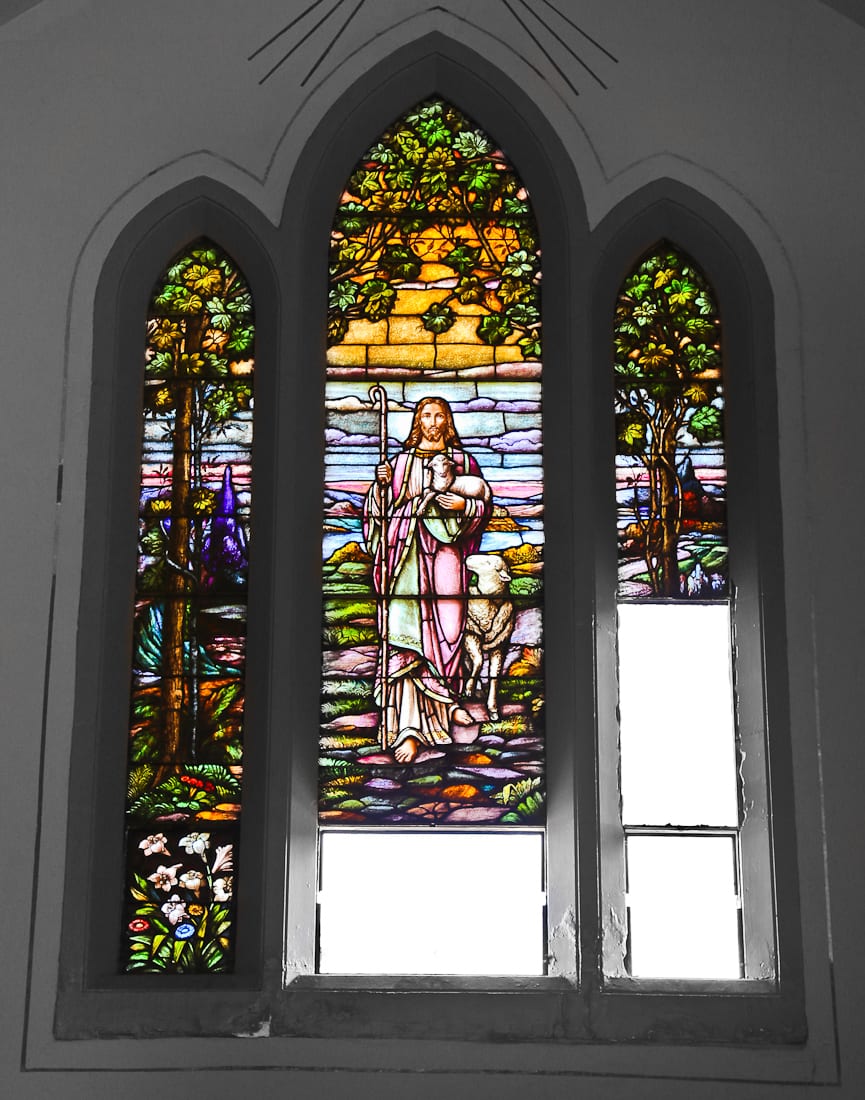
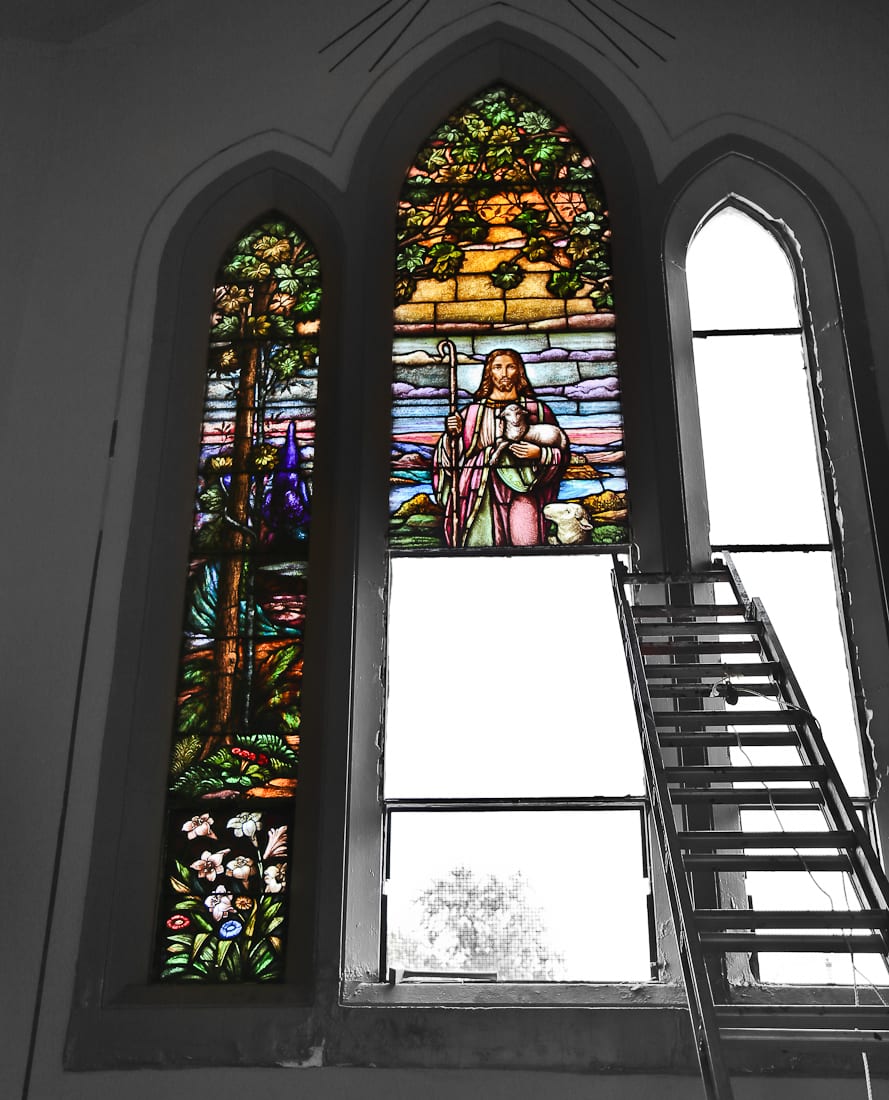
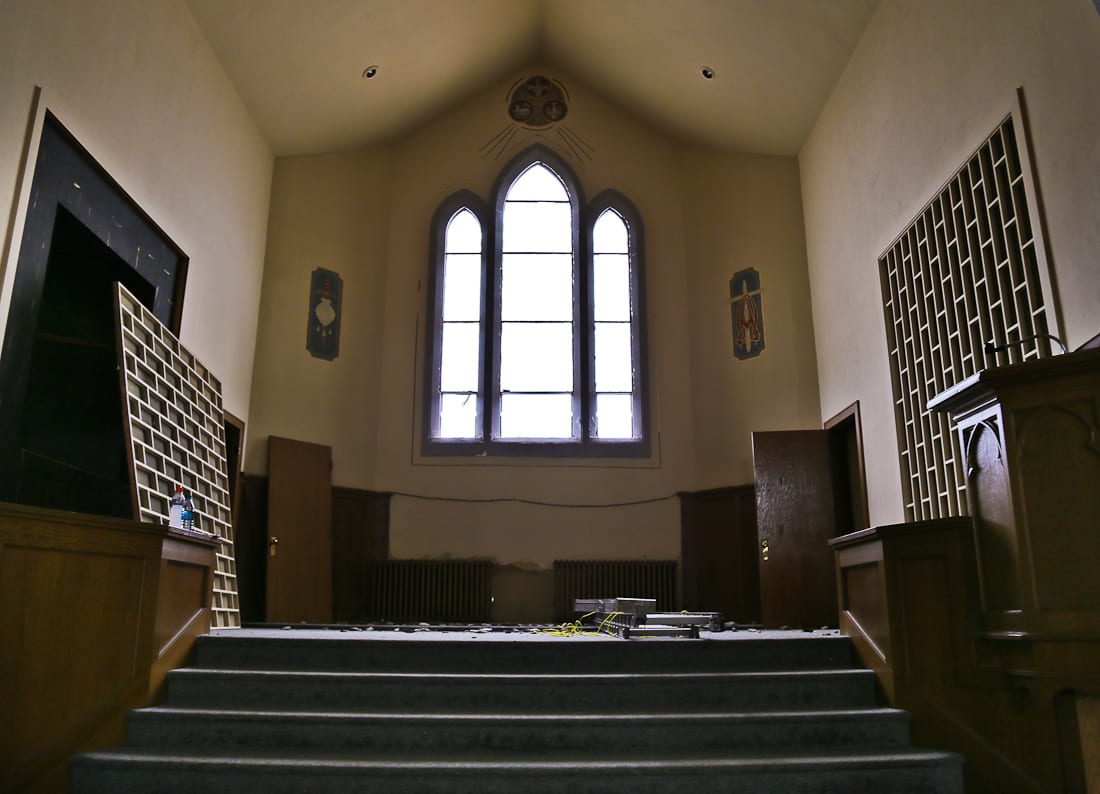
This entry was posted in , Miscellaneous, Salvages, Bldg. 51, Events & Announcements, New Acquisitions, Featured Posts & Bldg. 51 Feed on October 26 2016 by Eric
WORDLWIDE SHIPPING
If required, please contact an Urban Remains sales associate.
NEW PRODUCTS DAILY
Check back daily as we are constantly adding new products.
PREMIUM SUPPORT
We're here to help answer any question. Contact us anytime!
SALES & PROMOTIONS
Join our newsletter to get the latest information
























